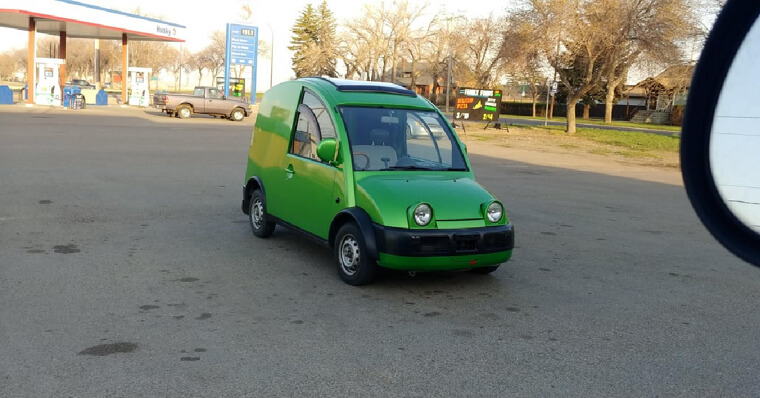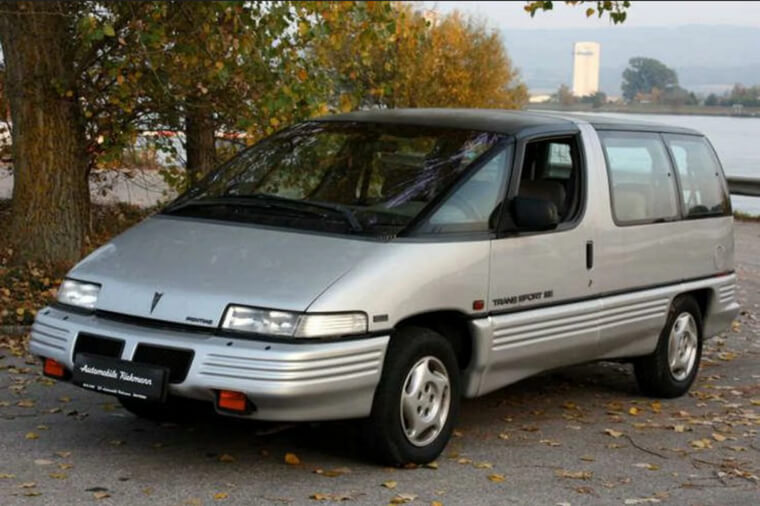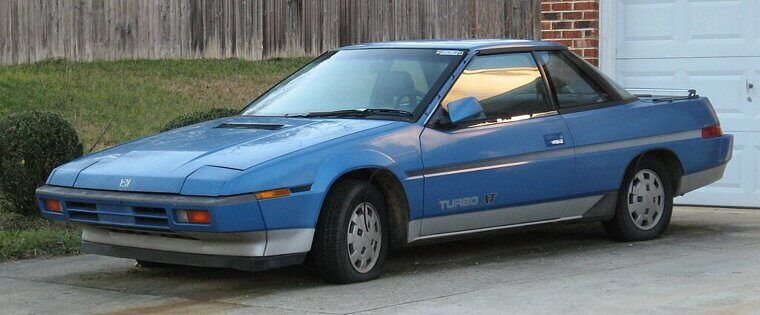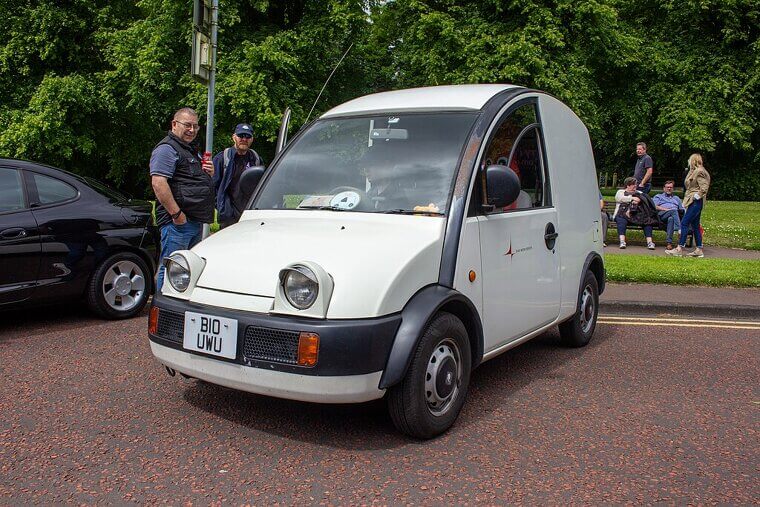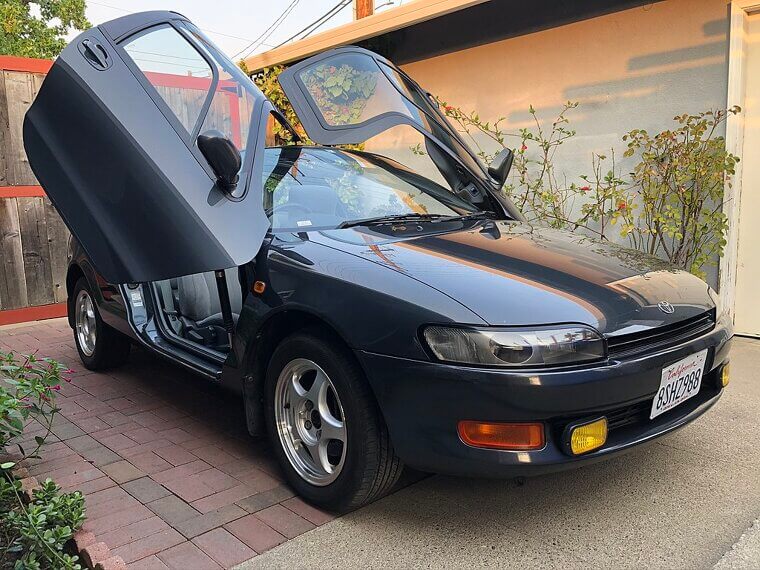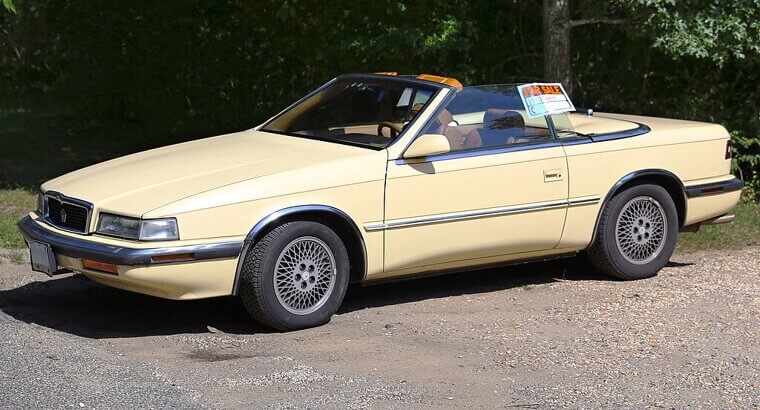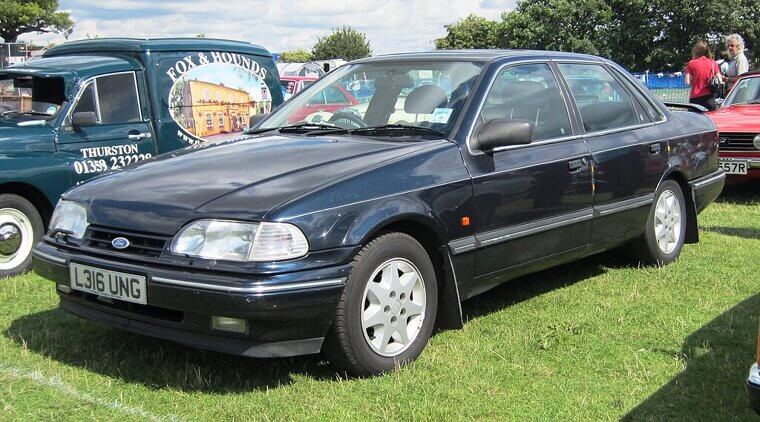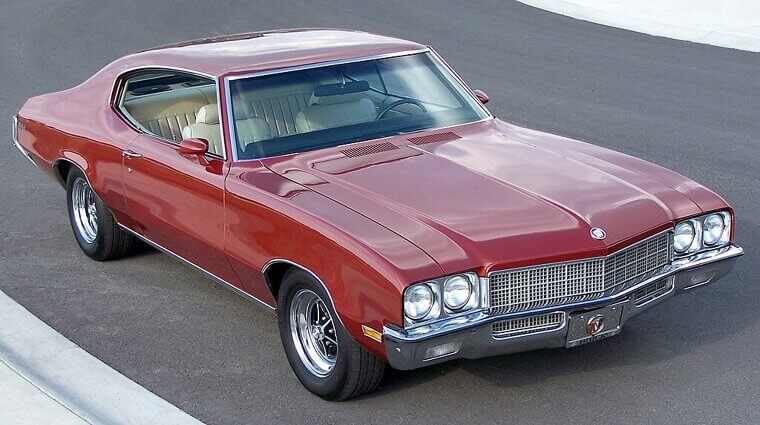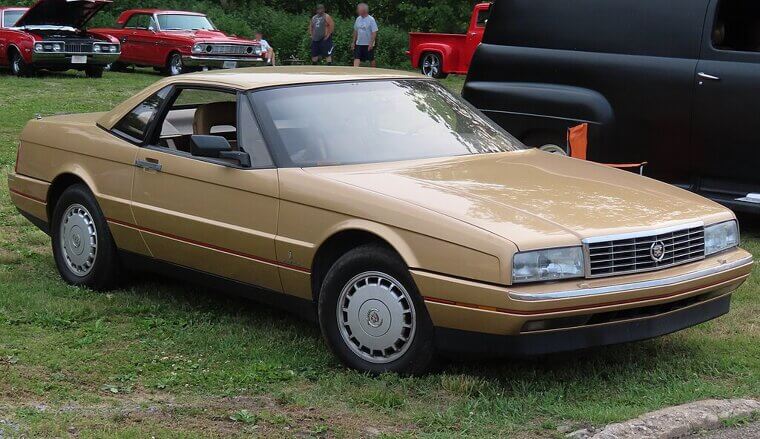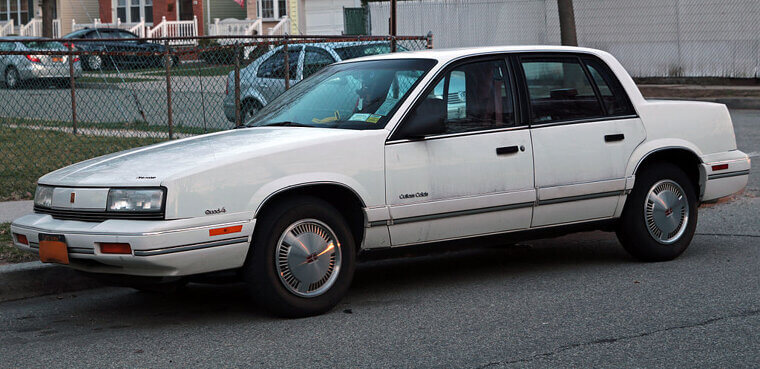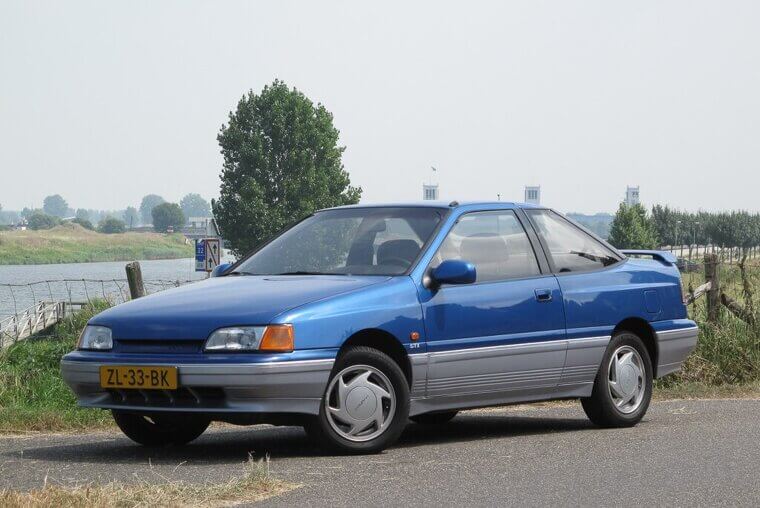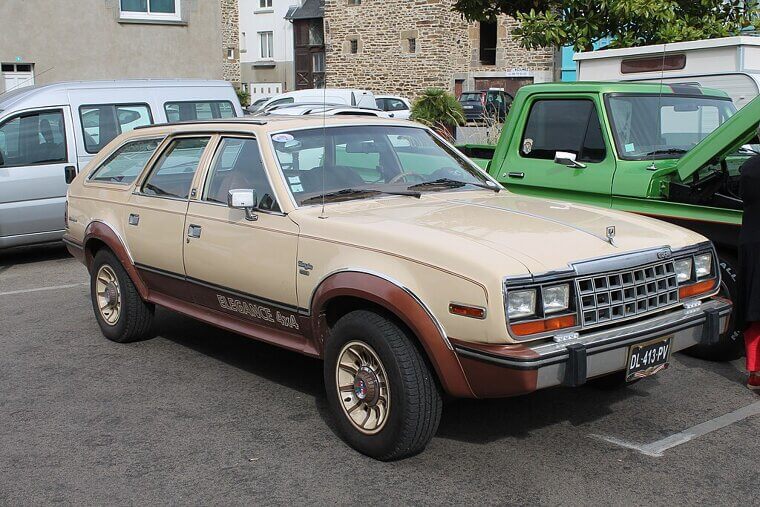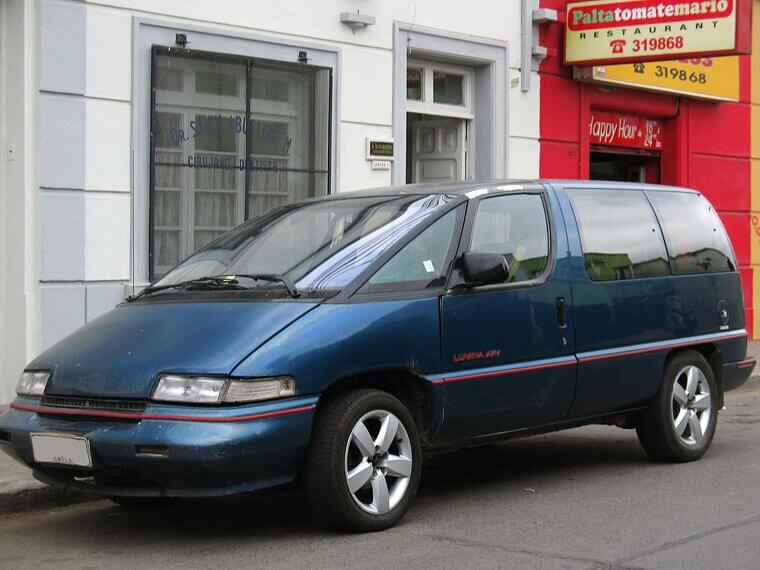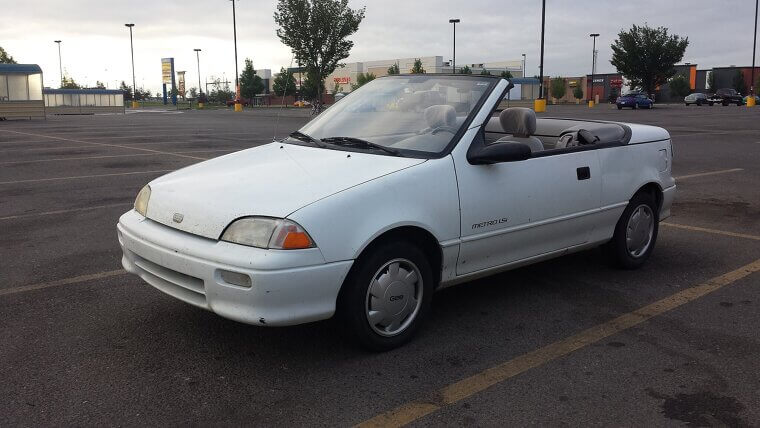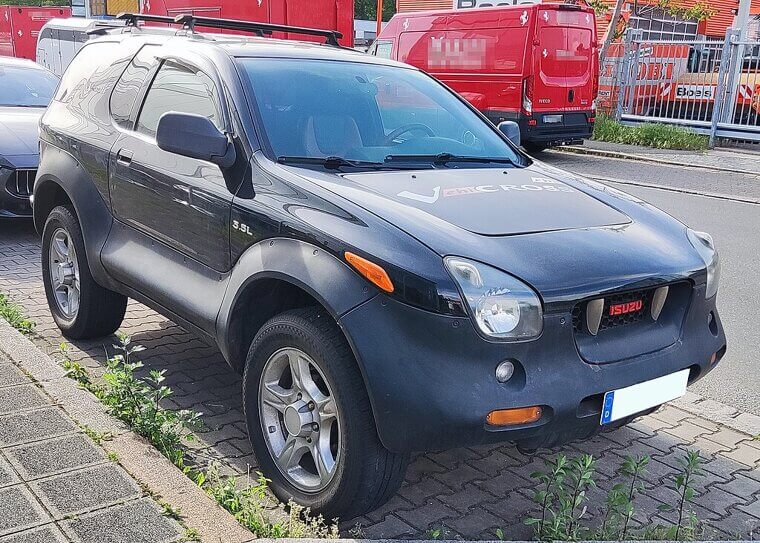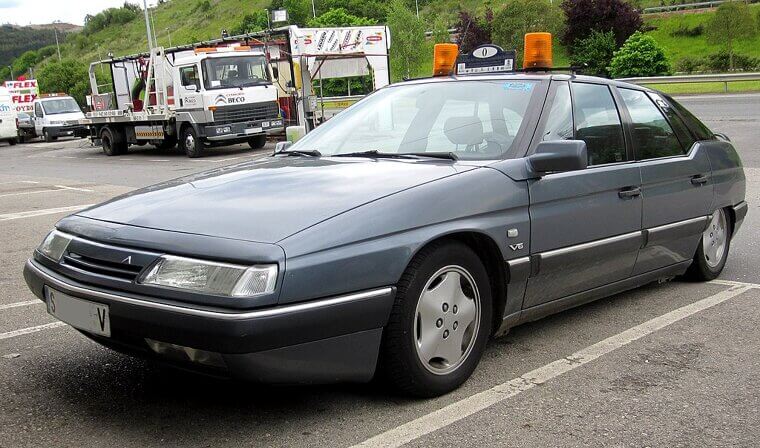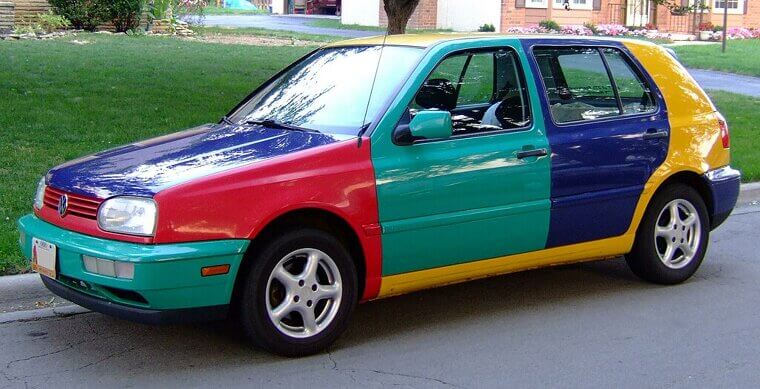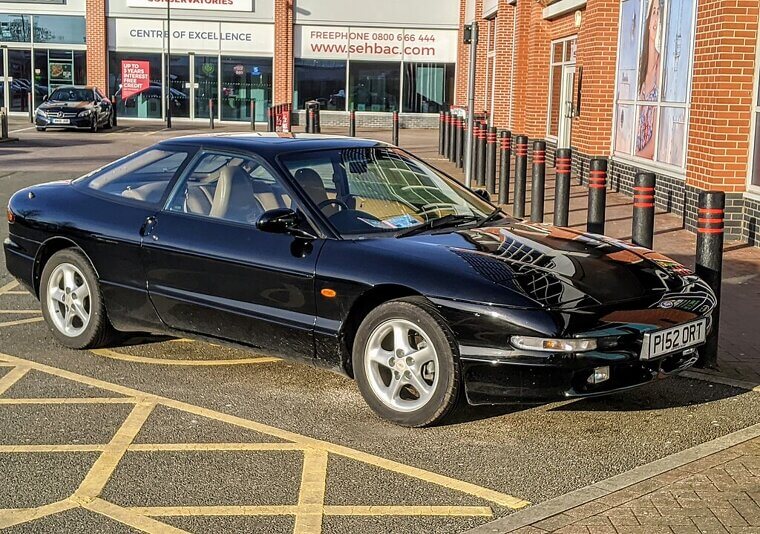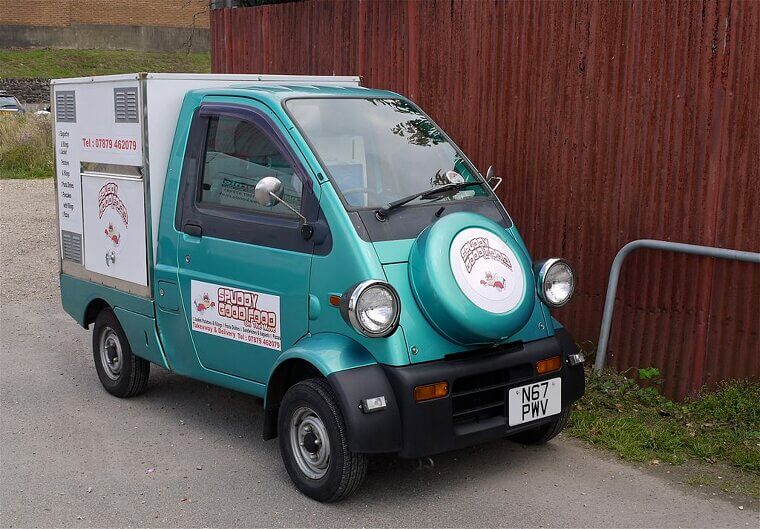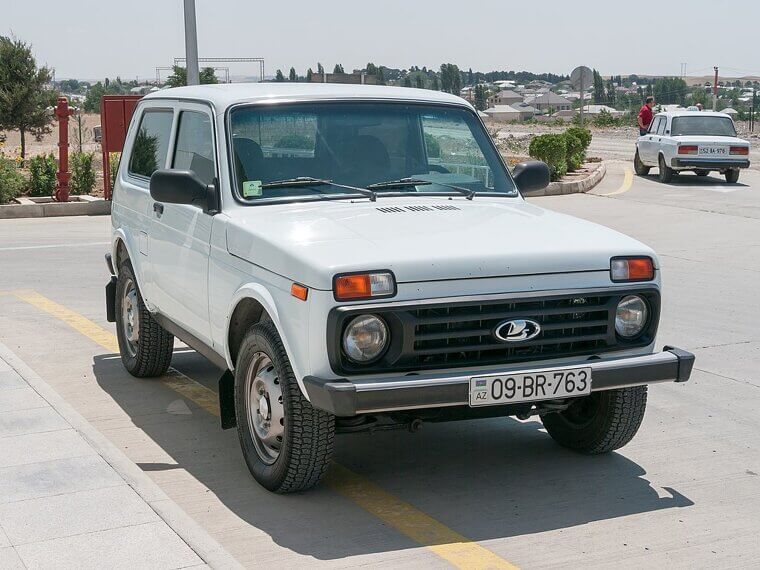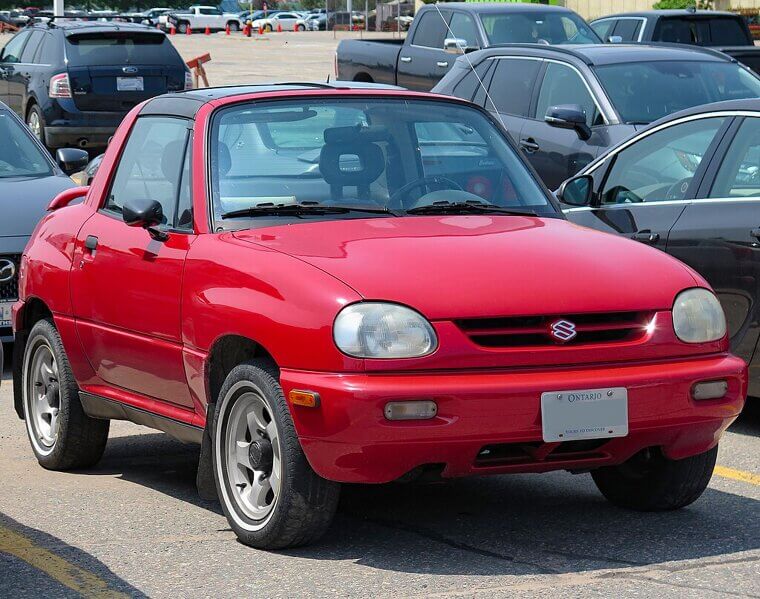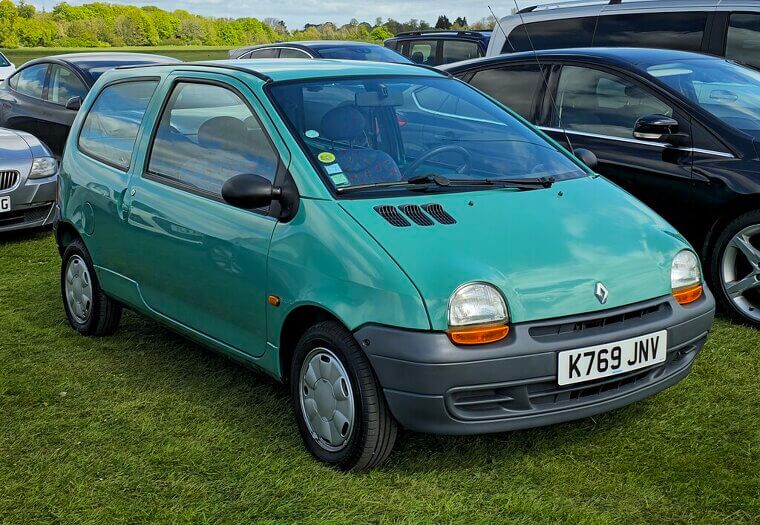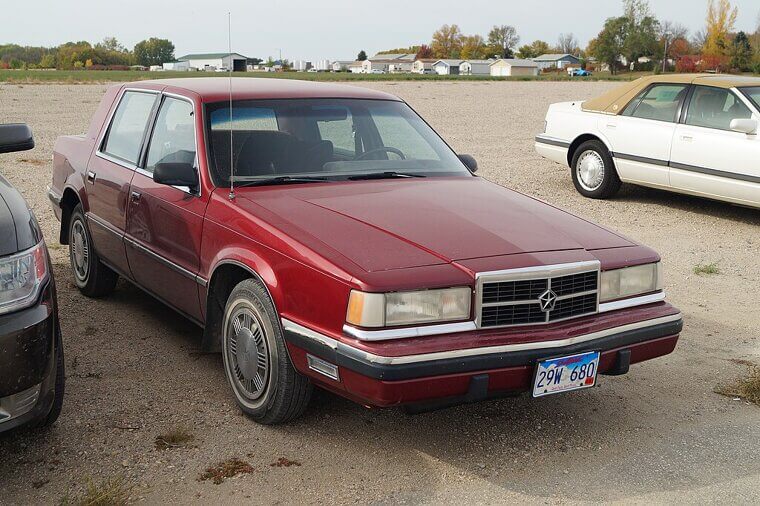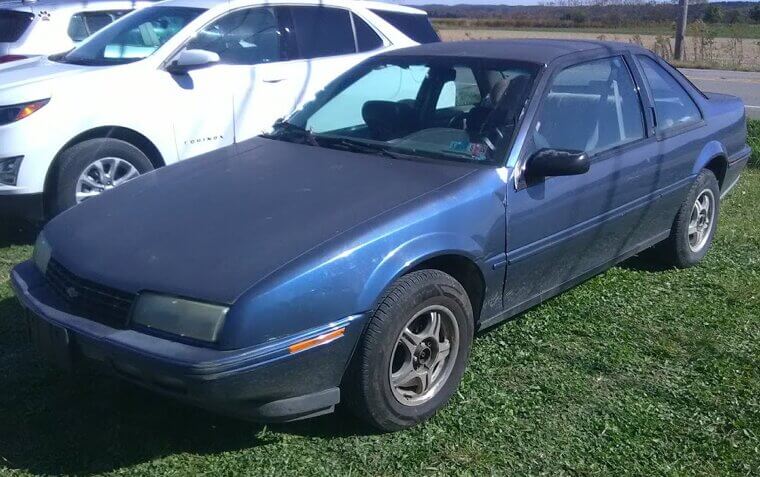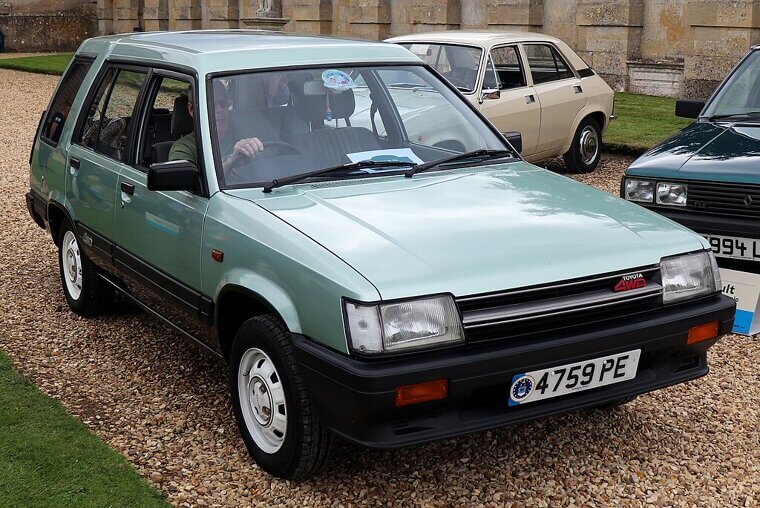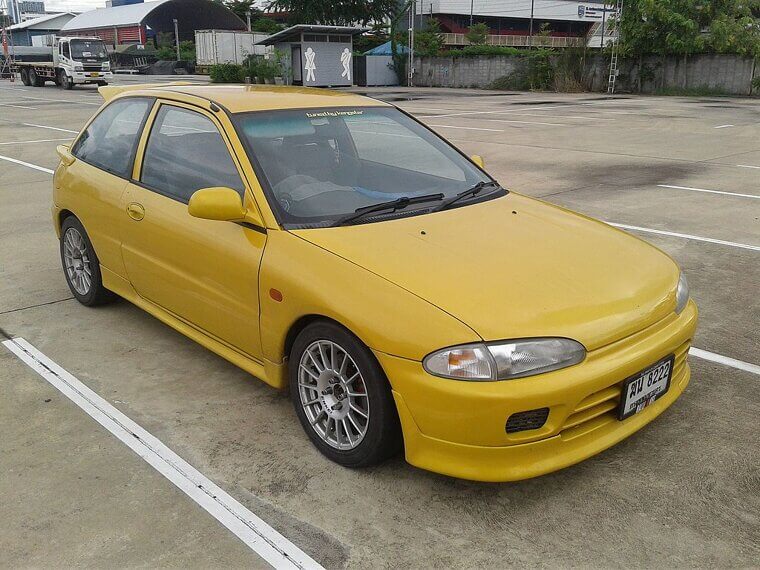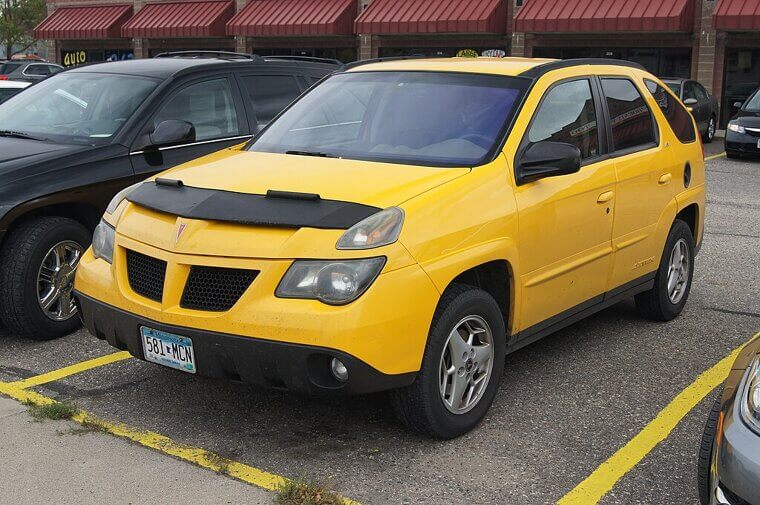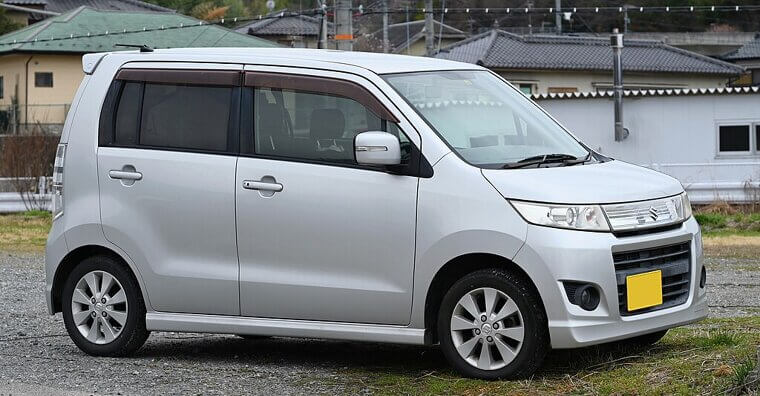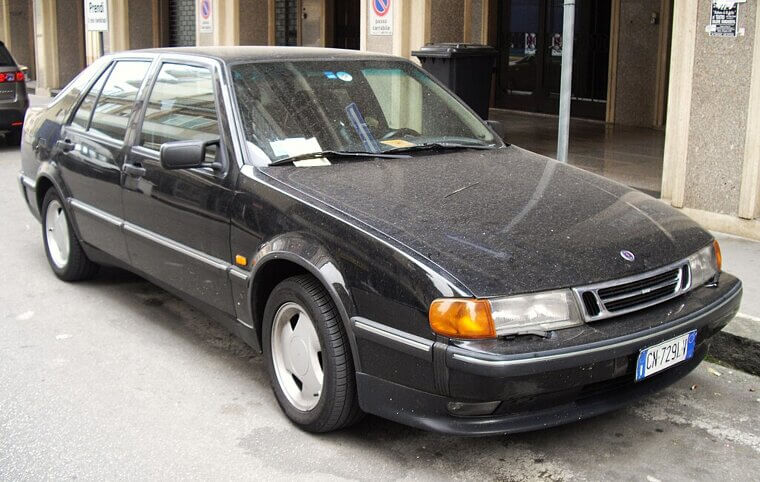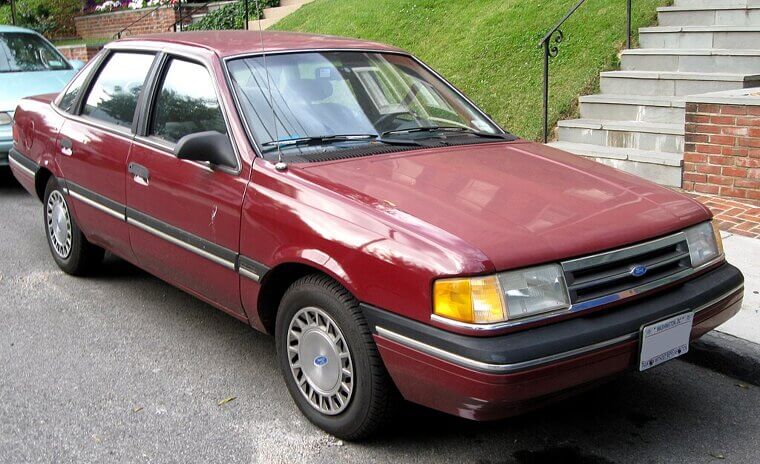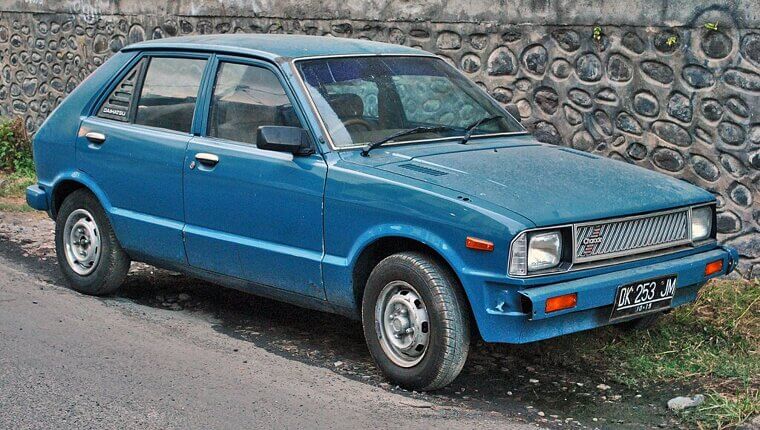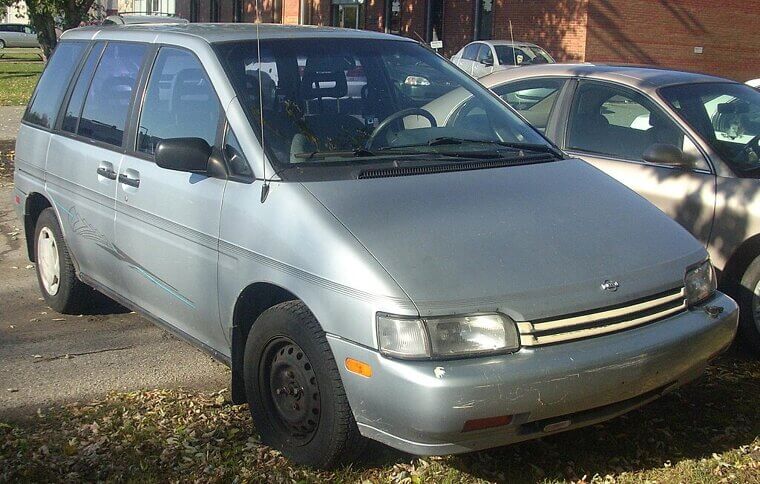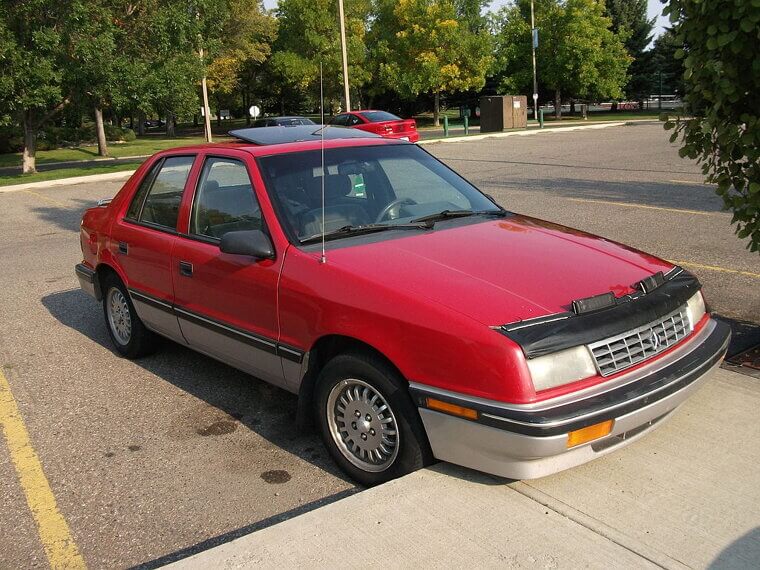Car Designs People Actually Paid Money for
The ’80s and ’90s were decades of bold innovation - and bolder missteps! Car designers either chased the future too hard or clung to the past like it owed them money. From melted-bar-of-soap silhouettes to unholy panel gaps, these cars stood out… for all the wrong reasons.
Pontiac Trans Sport (1990–1996)
A minivan that looked like a rejected Star Trek shuttle, the Trans Sport was Pontiac’s attempt to bring space-age vibes to suburban grocery runs. Instead, its proportions gave it the unfortunate look of a bar of soap in a wind tunnel, and it ended up more Fisher-Price than Federation.
Subaru XT (1985–1991)
Subaru went for “aerodynamics,” but landed somewhere on “triangle with blinkers.” It had pop-up headlights (cool) but also airplane-style cockpit controls (confusing) and an interior so angular it could cut your kneecaps. To its credit, it was different - just not in a good way.
Nissan S-Cargo (1989–1991)
Meant to be a pun on “escargot” (yep, a snail), this tiny Japanese van had googly-eyed headlights and a hunchback shape that screamed children’s television mascot. It’s since become a cult classic in ironic car circles, but at the time it was a punchline.
Toyota Sera (1990–1995)
Butterfly doors don’t work on a wheeled fish tank with more glass than dignity. The enormous canopy-style windows made it feel like you were driving a greenhouse, and on sunny days it became a slow-cooking sushi roll. It inspired the McLaren F1’s doors, though.
Chrysler TC by Maserati (1989–1991)
This was supposed to be a luxury lovechild between Chrysler and Maserati. Instead, its boxy shape was all beige business, and the weird mix of Chrysler parts bin and Italian flair didn’t mesh; it clashed. Badly. Even Lee Iacocca couldn’t sell this one. It was slow, expensive, and awkward.
Ford Scorpio (1994–1998)
The poster child for melting cars, the Scorpio’s front end looked like a startled fish, with bug-eyed headlights paired with a droopy grille. Ford tried to go upscale in Europe with this one, but it ended up looking like a bloated budget rental that let itself go.
Buick Skylark (1992–1998)
It’s like Buick tried to draw a sports car, got distracted halfway through, and finished it with a ruler. The front end was all weird angular aggression, while the rest of the car gave up entirely. It was reliable, sure, but its aesthetic was “plastic model kit left on a radiator.”
Cadillac Allanté (1987–1993)
Built in Italy, flown to America, and assembled like a luxury Frankenstein’s monster, the Allanté was both ambitious and painfully awkward. The proportions were off, the ride was clunky, and its biggest claim to fame was being more expensive than it looked. Which is… not great.
Oldsmobile Calais (1985–1991)
A fancy name (thanks, France!) couldn’t save the Calais from looking like a shoebox on wheels. It had sharp edges, zero personality, and a front end that seemed deeply confused about whether it was angry or asleep. Some trims had faux aero kits that gave it “sports car cosplay” vibes.
Hyundai Scoupe (1990–1995)
The name tried to embody “sporty coupe,” but the result looked more like an early’ 90s toaster: Awkwardly proportioned with mismatched lines and some of the least inspiring alloy wheels in history. The Scoupe was affordable… but in that “you get what you pay for” kind of way.
AMC Eagle Wagon (1980–1988)
Props for ambition: the Eagle Wagon was one of the first crossovers, a lifted station wagon with 4WD. But the looks? Hoo boy. Imagine a 1970s wood-paneled family wagon that got a suspension lift and decided to go off-roading without telling anyone. It had the proportions of a moose in hiking boots.
Chevrolet Lumina APV (1990–1996)
Another one for the “Dustbuster” crew, this wedge-shaped van had a steeply sloped windshield that was practically a hazard to birds while inside, you got digital gauges and a disturbing amount of grey plastic. It was a family car that made you want to take two separate vehicles.
Renault Alliance (1983–1987)
Built in the U.S. by AMC, this was Renault's attempt to seduce Americans with European flair… but forgot the flair. It was boring; the convertible version looked like it had been sliced with a bread knife, while the sedan was so bland it could’ve been used to test sleep medications.
Geo Metro Convertible (1990–1993)
Convertibles are supposed to be sexy. The Metro Convertible said, “What if we weren’t?” Tiny, wobbly, and underpowered, it had decent fuel economy, but looked like a soap dish with a soft top. The styling gave off strong vibes of “first car bought with babysitting money.”
Isuzu VehiCROSS (1997 Concept / 1999–2001 Production)
While it had real off-road chops, with its bug-eyed headlights, clamshell body cladding, and armor-like panels, the VehiCROSS looked like it was built for a space desert rally. The design was equal parts genius and fever dream. It was equal parts glorious and grotesque, but wholly unforgettable.
Citroën XM (1989–2000)
The XM tried to be futuristic, yet somehow landed in angular alien spaceship territory. It had a weirdly tall rear, a flat-nosed front, and creases where there shouldn’t be any. Inside, it was full of wild tech and hydropneumatics, so it was innovative… It just looked like an early “Doctor Who” prop.
Volkswagen Golf Harlequin (1995–1996)
When VW says, “Color coordination is for cowards,” you get the Harlequin - a normal Golf chopped up and reassembled in four or five different body colors. It resembled a randomized jigsaw puzzle of something tragically ugly, turning a fun idea into a clown car that gets side-eye.
Ford Probe (1989–1997)
Ford’s unfortunately-named attempt at a sleek, modern coupe was polarizing; some love its ’90s spaceship vibes, others see a squashed jellybean. With pop-up headlights and unfortunate styling, the Probe was a gamble, and from certain angles, it looked like it was melting in the sun.
Daihatsu Midget II (1996–2001)
The Midget II was a one-seater Kei truck that would have belonged in a Mario Kart game if it was faster. With its single center headlight and toy-like stance, it was like someone tried to build a delivery vehicle out of a lunchbox. It managed to be both adorable and hideous simultaneously.
Lada Riva (1980–2012)
A time capsule from the Soviet Union that somehow kept on rolling well into the 21st century, the Riva was boxy, basic, and built like a brick… but with none of the charm. It was as if an ’80s car was designed in the ’60s with tech from the ’50s.
Suzuki X-90 (1995–1997)
The X-90 was Suzuki’s wild shot at a fun off-roader that came out like a coupe that rear-ended a Jeep. Tiny, stubby, and with proportions that defied logic, it was baffling to look at and even weirder to drive. It’s now a cult classic - mostly because people can’t believe it existed.
Renault Twingo (Mk1) (1992–2007)
Its big-eyed, frog-faced front gave the Twingo personality... but that was also the problem. It looked perpetually surprised, with a design that felt more Tamagotchi than transportation. It’s solid proof that cuteness does not equal beauty.
Dodge Dynasty (1988–1993)
Designed entirely with straightedges and zero inspiration, the Dynasty belonged in a fleet from a dystopian government that banned personality. The slab-sided panels and square face gave it the presence of a filing cabinet in traffic. It’s the kind of car that could disappear in a suburban parking lot.
Chevrolet Beretta (1987–1996)
The Baretta has a cool name - a stark contrast to what you got, which was a bloated two-door coupe with a long nose and the charisma of a plastic lunch tray. It tried to be sporty, but it always looked like it had a nose job from the wrong decade.
Toyota Tercel Wagon 4WD (1983–1988)
The Tercel Wagon was functional, sort of adventurous, but its high roofline, hunched rear, and bug-eyed front gave it the appearance of something permanently bracing for impact. Some people swear by its practicality; others just swear when they see it.
Mitsubishi Mirage Cyborg (1992–1995)
You’d expect the Cyborg to be futuristic and a bit menacing; instead, it was all spoilers, scoops, and attitude trapped in a body like an appliance. It was a tuner’s dream, but to most people it looked like a regular hatchback lost a bet with a body kit catalog.
Pontiac Aztek Concept (1999)
The concept warned us. It said, “Hey, what if a Transformer had an existential crisis?” While the production Aztek is already infamous, the concept looked like someone mashed a minivan, ATV, and vacuum cleaner into one and then gave it rollerblade wheels. It still haunts design students in their nightmares.
Yugo GV (1985–1992)
The Yugo was cheap, boxy, and about as stylish as a cinder block in gym socks. From its mismatched panel gaps to its comically underpowered engine, the GV (“Great Value”, they said) became the punchline to every car joke in the ’80s.
Suzuki Wagon R (1993–present)
The Wagon R could pass for a microwave on wheels. With its ultra-tall roof and boxy silhouette, it was built for practicality, but somehow ended up with a rolling vending machine aesthetic. It’s still alive in some markets, proving once again that looks don’t kill (but they make pedestrians giggle).
Kia Sephia (1992–2003)
Early Kia’s design motto seemed to be “as generic as legally possible.” The Sephia was the human shrug of cars. Bland, frumpy, and with a face like it just got told it can’t go to prom, even in the ‘90s - a decade not known for restraint - this thing failed to raise a single pulse.
Saab 9000 (1984–1998)
Some folks love the 9000’s brutalist charm, but it looked like it was designed using only rulers and resentment. Saab’s signature quirkiness turned into an executive sedan with the body language of a beige brick. Sleek it was not; it was more of an IKEA cabinet with headlights.
Ford Tempo (1984–1994)
A staple of American driveways and retirement communities, the Tempo’s design was so bland it made oatmeal jealous. With those inset headlights and oversized bumpers, it had the proportions of a confused stapler. It was the “meh” car of a generation, and no one missed it when it faded into obscurity.
Daihatsu Charade (1983–2000)
A name like “Charade” sets expectations low, and oh boy, it delivered. Its bug-eyed expression and awkward profile made it look like it was constantly apologizing for its existence and expecting the fashion police to pull it over at any moment.
Nissan Axxess (1990–1995)
Nissan’s early attempt at a compact MPV, the Axxess was a minivan that appeared to have skipped a step. It was neither cute nor rugged, just kind of there, like the automotive equivalent of a placeholder image. It had the odd proportions and design excitement of a middle-management seminar.
Plymouth Sundance (1987–1994)
With a name like Sundance, you’d expect sunshine, freedom and soul. What you got was a stubby, dowdy compact that seemed to be assembled from leftover Dodge parts. The Sundance always seemed one design tweak away from looking decent, but alas, those tweaks never came.

